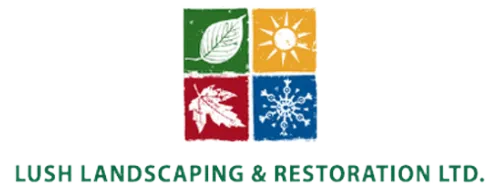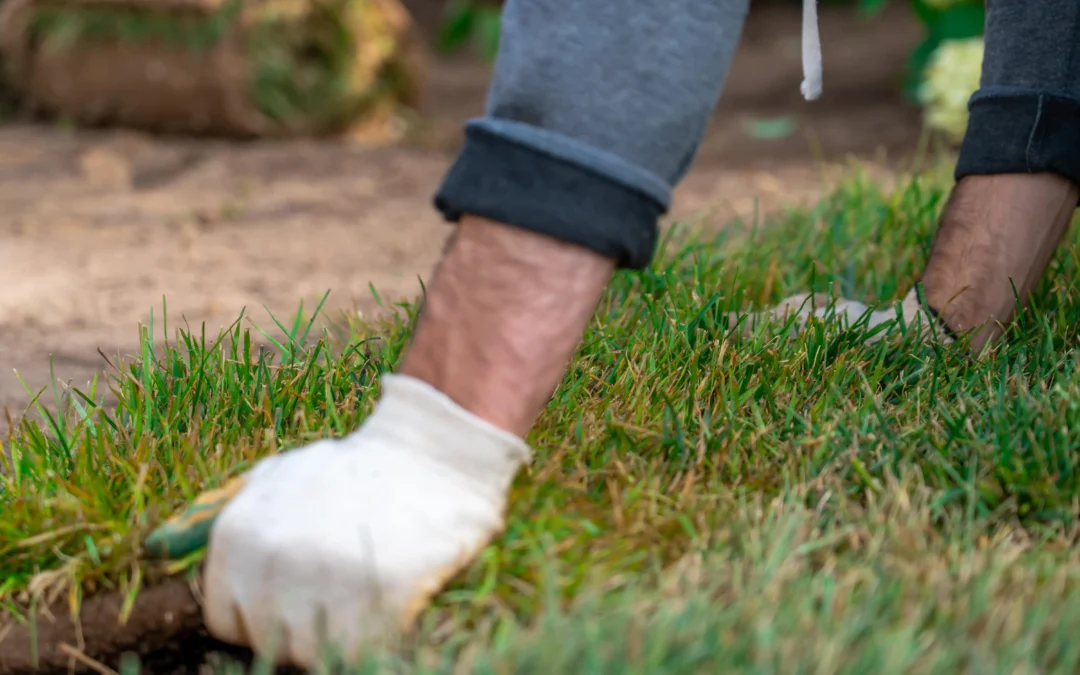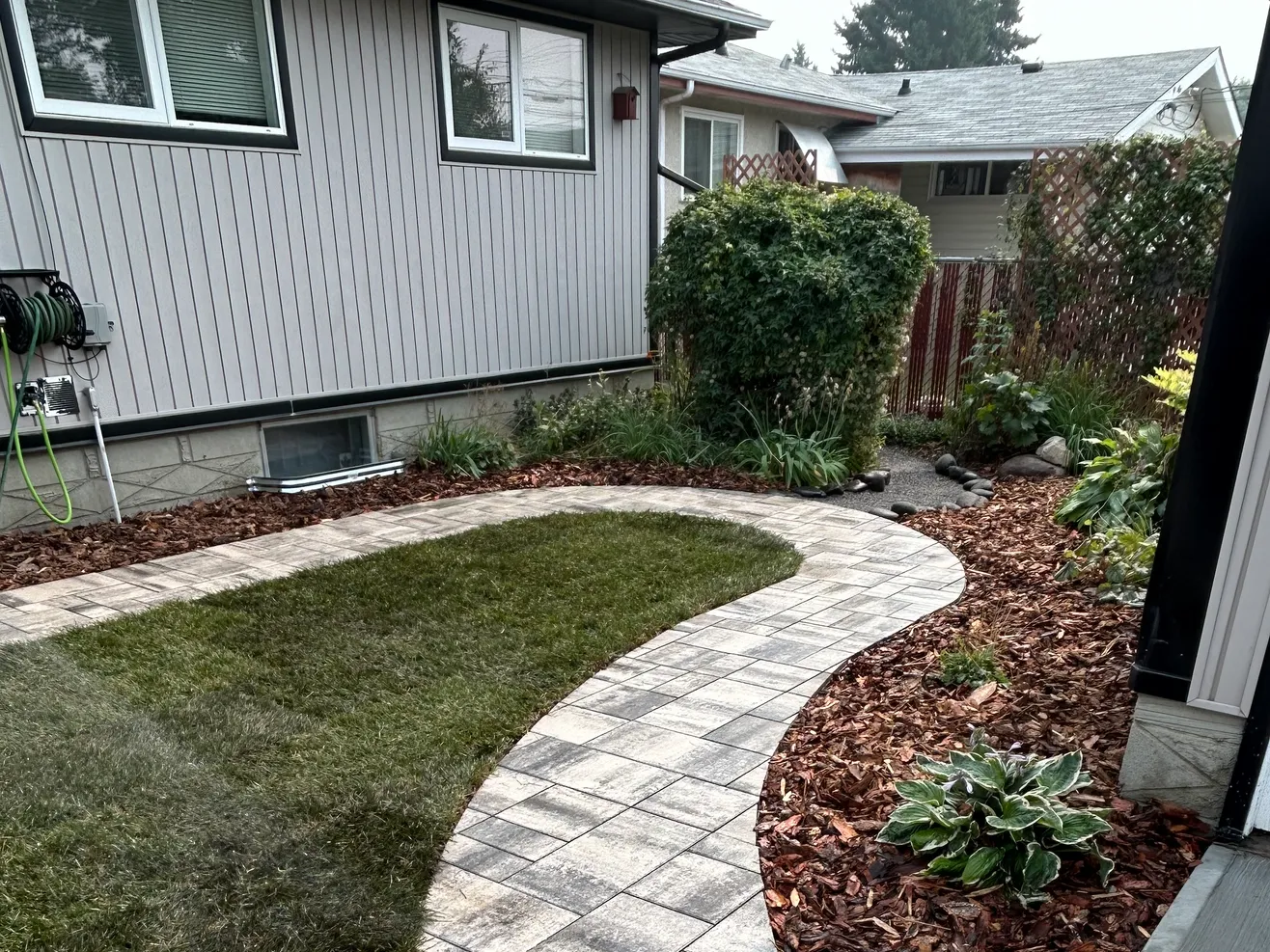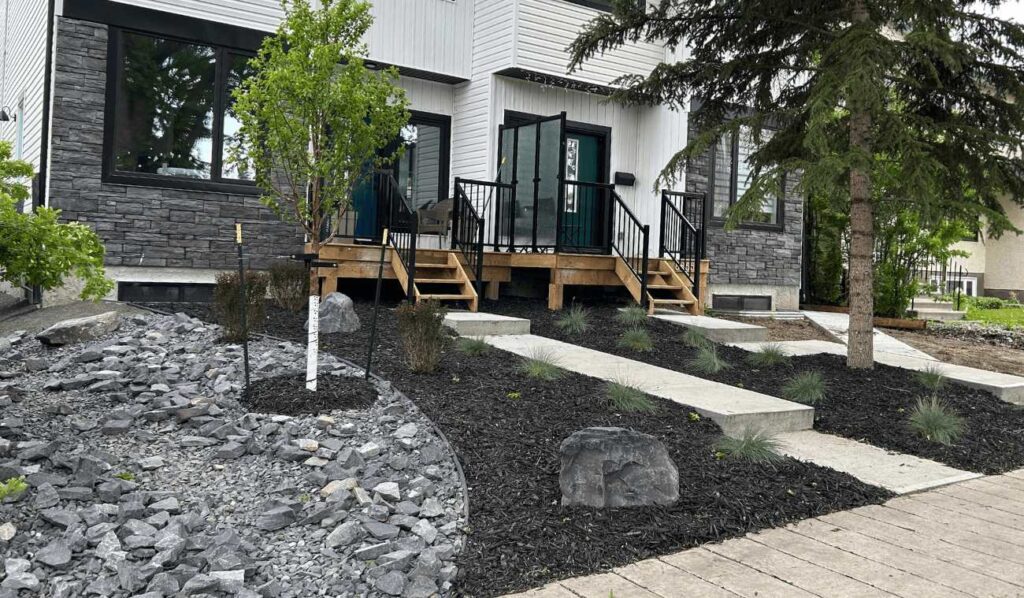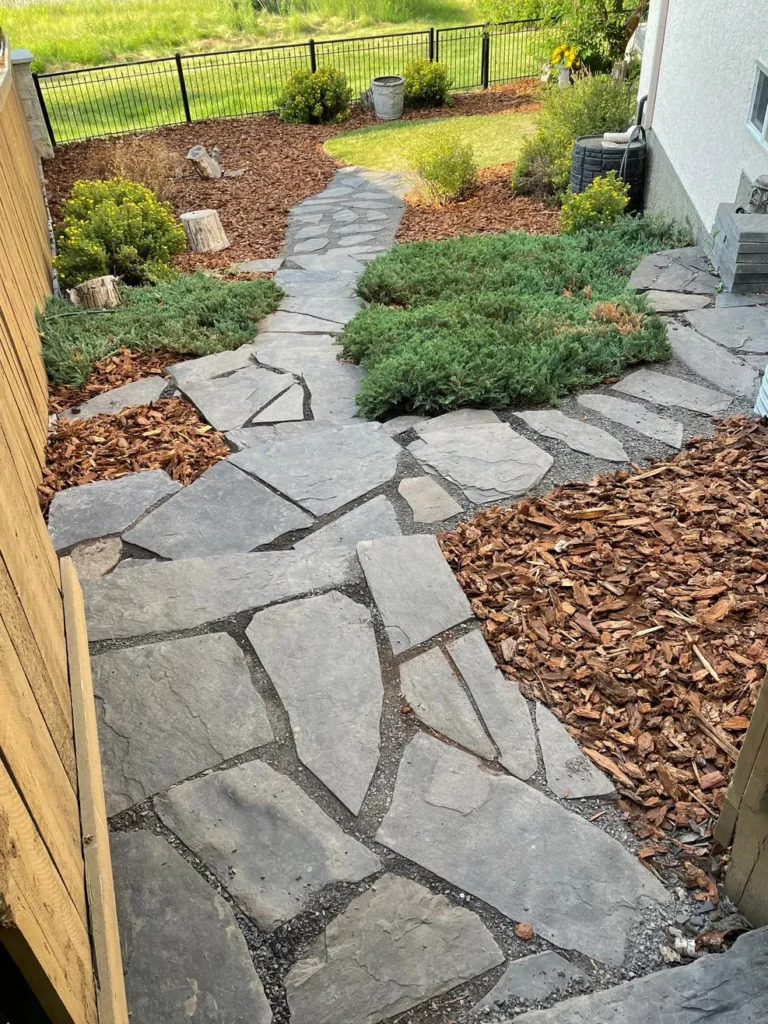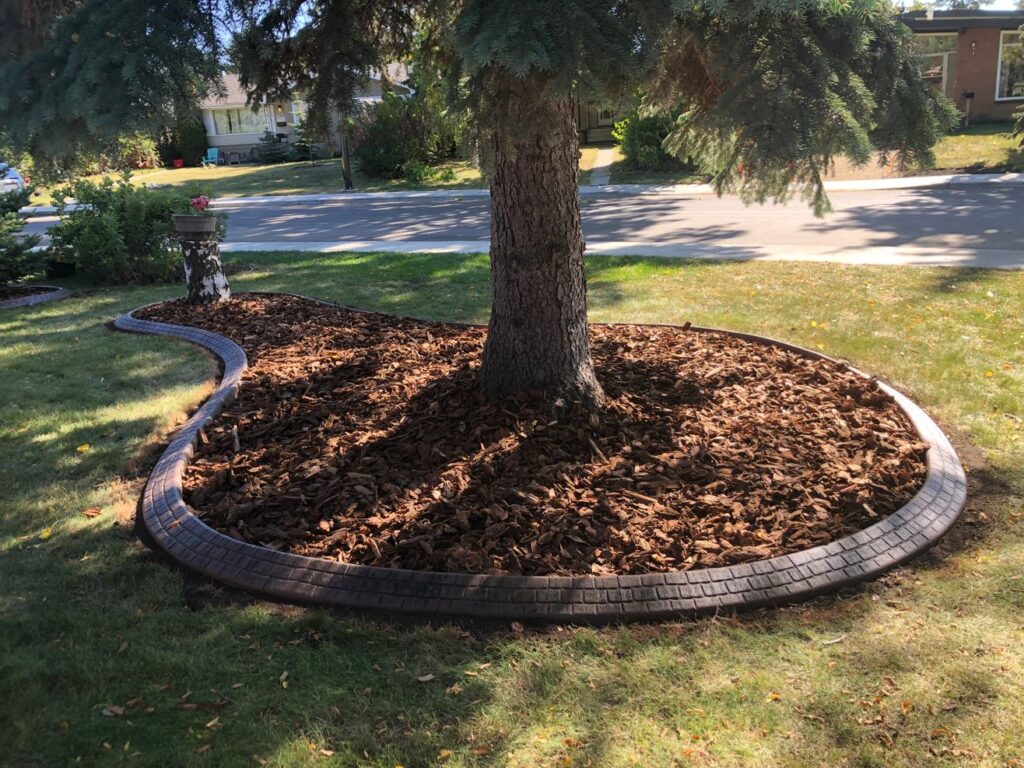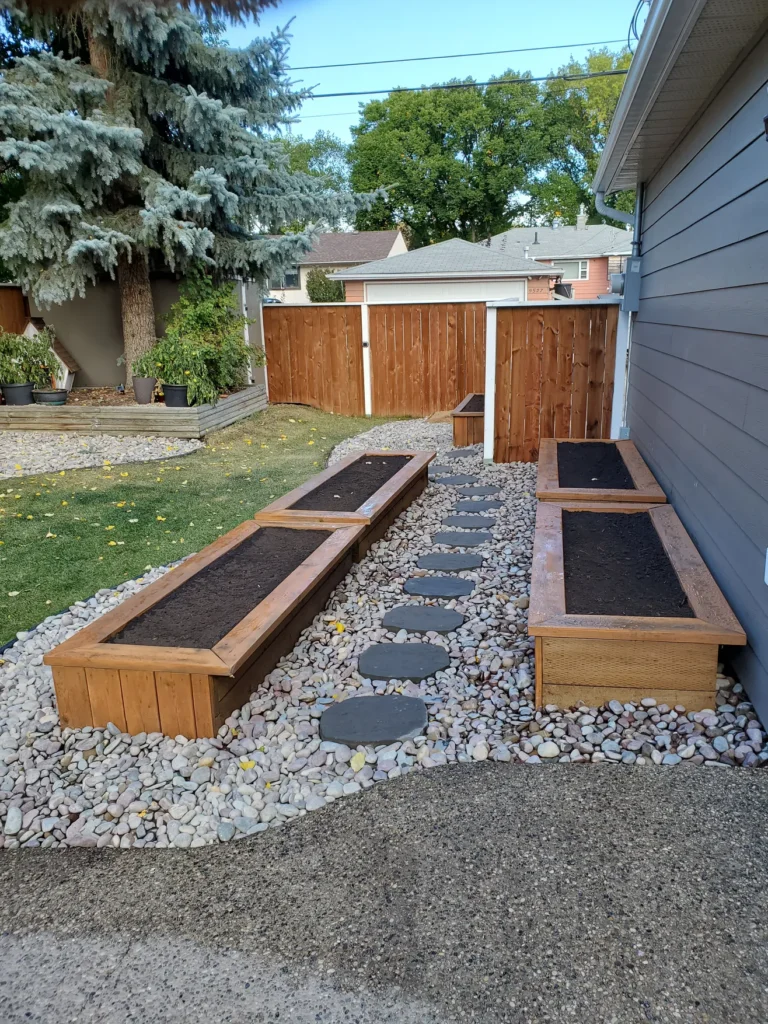
Edmonton’s tough winters and dry summers can leave lawns looking patchy, thin, or bare. Homeowners often face the question of how best to bring their yards back to life: overseeding or sodding. Each method has its own advantages, costs, and maintenance requirements. At Lush Landscaping, we help Edmonton homeowners choose the right approach based on their lawn’s condition and long-term goals.
Why Lawns in Edmonton Need Recovery
Freeze-thaw cycles, snow cover, drought, and heavy foot traffic all weaken grass over time. Lawns often emerge from winter with bare patches, while hot summers can dry out roots and thin growth. Restoration is necessary to keep turf thick, healthy, and resistant to weeds.
What Is Overseeding and How Does It Work?
Overseeding involves spreading new grass seed over existing turf to fill in bare or thinning areas. It works best when the soil is aerated beforehand, allowing seeds to make contact with the soil for proper germination. Overseeding gradually thickens a lawn and improves its resilience without the need to start from scratch.
What Is Sodding and How Does It Work?
Sodding means installing rolls of pre-grown grass over prepared soil. It provides an instant lawn and is often used for large bare areas or complete yard makeovers. Proper soil preparation and irrigation are essential for sod to take root and grow successfully.
Key Differences Between Overseeding and Sodding
Cost Comparison
Overseeding is less expensive, requiring only seed, soil prep, and time. Sodding costs significantly more due to the purchase of mature grass and the labour required for installation.
Speed of Results
Sodding delivers immediate results, creating a green lawn in a single day. Overseeding takes several weeks for seeds to germinate and fill in, with full results visible in one to two growing seasons.
Labour and Effort
Overseeding is less labour-intensive but requires consistent watering and patience. Sodding is more demanding during installation but offers instant gratification once the sod is laid.
Climate Adaptation and Durability
Overseeding allows homeowners to choose seed mixes suited to Edmonton’s climate, improving long-term adaptation. Sod can also thrive in Edmonton but may be less resilient if not matched properly to soil and climate conditions.
Which Method Is Right for Your Yard?
- Overseeding is best for lawns that are thin but still have a healthy base of grass. It is cost-effective and strengthens existing turf.
- Sodding is the right choice for bare or severely damaged lawns where fast results are needed. It is also ideal for new yard installations.
Maintenance Timelines After Overseeding or Sodding
- Overseeding: Water lightly and frequently until seeds germinate, then reduce watering to encourage deep roots. Mow only once the new grass reaches 3 inches. Fertilize after 6–8 weeks for stronger growth.
- Sodding: Water daily for the first two weeks, ensuring the sod stays moist until roots establish. Avoid heavy foot traffic for 3–4 weeks. Resume normal mowing and fertilization once the sod is secure.
Professional Lawn Recovery for Edmonton Homeowners
Both overseeding and sodding can transform a tired lawn, but choosing the right method depends on your budget, timeline, and yard condition. At Lush Landscaping, we provide expert yard restoration services tailored to Edmonton’s climate. We also offer landscaping design and plant selection and planting to complement your lawn. Contact us today to find the best solution for your yard recovery.
